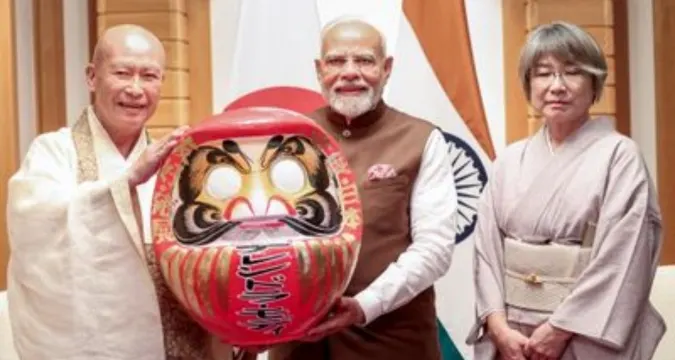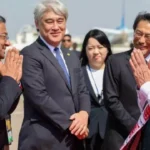The spotlight of diplomacy this week is on Tianjin as the prime minister Narendra Modi will hold two meetings with Chinese President Xi Jinping in the course of the Shanghai Cooperation Organisation (SCO) Summit. It is the first trip of Modi to China in seven years, which highlights the magnitude and intricacy of the India-China relations in the face of the significant global geopolitical changes.
New Delhi is sensitive to the timing. India is now grappling with the repercussions of the 50-percent tariff increase on Indian exports by the U.S. President Donald Trump that has caused U.S.-India trade relationships to deteriorate. The economic pressure that Washington exerts on China creates little Indian space to dialogue with China as well.
New Delhi and Beijing are not the only ones who observe the Modi Xi meetings because they have the potential to transform regional stability and economic relations.
Modi’s First Visit to China Since 2018
The last visit by Prime Minister Modi to China was in 2018 during the Wuhan informal summit, which came after the Doklam standoff. Eastern Ladakh military tensions caused poor relations since the 2020 Eastern Ladakh military tensions put the dialogue to standstill. Only at the 2024 Kazan BRICS summit, Modi and Xi re-engaged on an official level, lifting the ice and resuming political-level discussions.
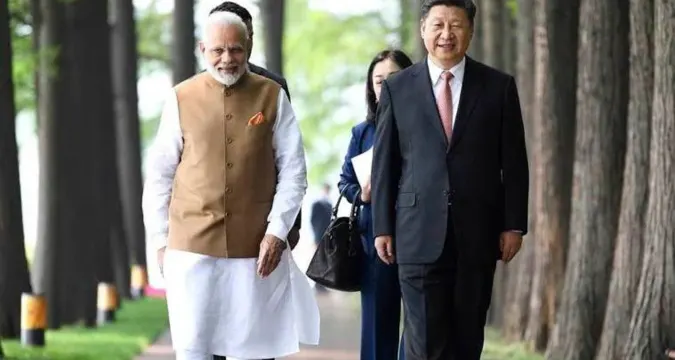
Analysts refer to the visit to China in 2025 as potentially the most important. It is not only concerned with the timing, but also represents a backdrop of changing alliances, economic realignment, and the rising security concerns in all of Asia.
Why Two Meetings Matter
Diplomatic sources indicate that PM Modi and President Xi will meet halfway in the day on Sunday. Their second meeting will be prior to the SCO banquet. In these two meetings, it has been revealed that the two countries desire the freedom to negotiate a variety of subjects- not only on trade and investment, but also on border security and regional relations.
The meetings send a strong message to the international stakeholders that India and China are trying their best to stabilize their relationship even after the earlier confrontations. The two meetings attended by Modi are viewed in Beijing as evidence that India takes the effort seriously. New Delhi considers them signs that dialogue remains the most suitable, although it is still viewed with some trepidation.
Key Themes Likely to Dominate the Talks
1. Trump’s Tariff Shock and Economic Cooperation
India and China are two nations that have been affected by aggressive tariff policy put forward by Trump.
India is the only country to be singled out to still import Russian energy, and China is the main trade competitor in Washington.
This common weakness might drive the New Delhi and Beijing to negotiate:
- Bilateral trade facilitation
- Supply‑chain resilience
- Potential alignment within the SCO framework
By 2024, India-China trade was USD 136b, with China becoming the largest trading partner of India despite the tensions between the two countries.
The trade deficit remains a significant issue, with the trade deficit of India standing at above USD100 billion.
The SCO sidelines can offer a fora in which corrective mechanisms can be discussed.
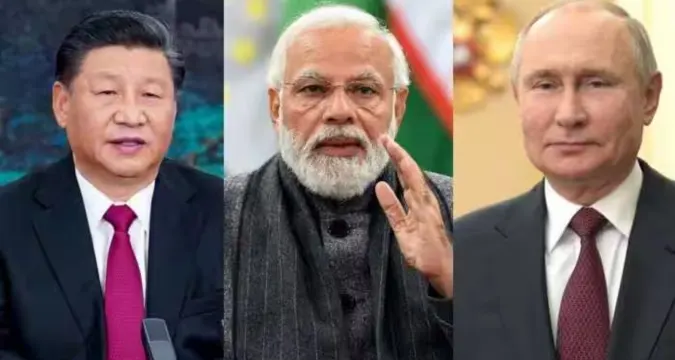
2. Boundary Issue and Eastern Ladakh Tensions
Although trade between the two countries is increasing, the border dispute between Ladakh and the rest of the country continues to give a dark shadow to their relations. NSA Ajit Doval and the Chinese Foreign Minister Wang Yi, as special representatives of the boundary talks, had two meetings in the last nine months. Such gatherings implied that an early harvest might be made on certain boundary questions, a term hardly employed in India-China diplomacy.
This does not mean that Modi and Xi will resolve the dispute immediately but can give a clear political direction to the negotiators. This would assist in ensuring that de-escalation and confidence-building are maintained.
3. Regional Security and Pakistan Factor
The prime minister of Pakistan will be the representative of SCO, Shehbaz Sharif.
The United States is warming up with Pakistan as indicated by the lunch that President Trump had with Pakistan Army Chief Asim Munir. This situation complicates the situation of India.
Consequently, close attention will be paid to the meetings of Modi with Xi in China and with Vladimir in Russia. The officials will examine the Indian position with respect to that of SCO by Pakistan and whether Beijing is indicating a shift in favor of Islamabad.
4. Energy and Russia’s Role
On Monday, PM Modi will be able to meet with the Russian President Vladimir Putin. India-Russia energy relations in the face of western sanctions has grown a source of tension with Washington.
China has intensified its oil and gas imports with Moscow.
The common Russia interest might lead to the energy co-activities and geo-political harmonization between Modi and Xi in the Eurasia region.
The SCO Summit: Why It Is Different This Time
Shanghai Cooperation Organization (SCO) is often dismissed as being symbolic. However, the 2024 summit in Tianjin was its most extensive one, welcoming 20 external leaders who are not part of the ten-member core. As the U.S. alliances change the SCO is trying to position itself as the counter to Western coalitions such as the G7 and NATO.
India has never taken the SCO participation with a fine balance- join without seeming to belong to a China led bloc. The active attendance of Prime Minister Modi this year demonstrates that India is interested in leveraging the platform to gain regional influence, obtain energy resources, and promote connectivity initiatives.
Expert Views from China
The Chinese scholars and policy makers have come out openly to welcome the presence of Modi.
- The Professor of the Renmin University, Zhou Rong, referred to Modi and Xi as friends who are well acquainted and their meetings could create an environment of harmony in the bigger SCO success.
- Rong Ying, a Senior Fellow at CIIS, insisted that involving India is essential to the credibility of SCO, indicating that India and China cooperation would open the potential of the region in security and development activities.
These remarks are indicative of the pragmatic stance of Beijing, who are aiming at restoring relations with India without ignoring the challenging heritage of the last 10 years.
Challenges That Cannot Be Ignored
In spite of the optimism, there are profound challenges that Modi and Xi are confronting:
- Lack of trust: Ladakh border incidents and troop strength in the area has undermined bilateral confidence.
- The increased relationship of India with the Quad (U.S., Japan, Australia) competes with Chinese interests in the Indo-Pacific.
- Trade imbalance: India will not be politically able to sustain its trade deficit with China without structural reforms.
Pakistan factor: China is on good terms with Pakistan, so far as New Delhi can go with the relationship.
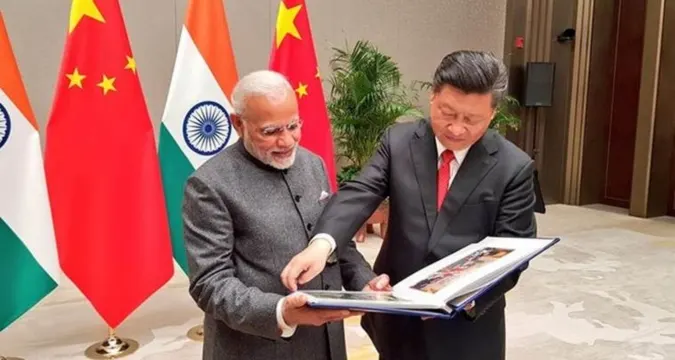
Why This Meeting Matters for the World
The meetings between Modi and Xi are not only bilateral, but they have an international meaning. India and China as two of the fastest-growing economies in the world collectively constitute almost 35% of the global population and a growing proportion of the world GDP. A thaw in their relations could:
- Rebalance Asian security dynamics.
- Dislocation of global supply chains with ongoing U.S. China decoupling.
- Affect energy politics, particularly with Russia.
- Determine the future of the SCO as a regional union capable of balancing the Western alliances.
Looking Ahead: Can Tianjin Mark a Turning Point?
Optimists believe that the Trump tariffs and shifting world alliances give India and China a special opportunity to compromise. Pragmatists warn that the relationship will not be strong because it has structural differences and mistrust that have its history.
The Tianjin meetings are unlikely to produce a dramatic breakthrough, but they may provide a blueprint on normalization. Even minor moves like consensus over confidence-enhancing mechanisms, facilitating trade, or parting ways with border tussles could be an indication of a major change in the standoff of the past few years.
Conclusion
The SCO Summit at Tianjin will be historic to India, China and the region. It is the first such visit of Prime Minister Modi to China in seven years, and he will be seen by President Xi Jinping twice. Such negotiations put bilateral relations at a crossroad.
There are still unresolved problems, but this dialogue of a high level itself is symbolic. In the case of India, the way forward is to be pragmatic, but cautious in order to take advantage of the available cooperation opportunities without jeopardizing the national interests. In the case of China, it is an opportunity to demonstrate that it regards India as a partner and not an adversary.
The world is observing the second phase of whether or not Modi and Xi will use this as an opportunity to forge a new stage of India-China relations characterized by cooperation, resilience and mutual respect in the face of global uncertainty.

